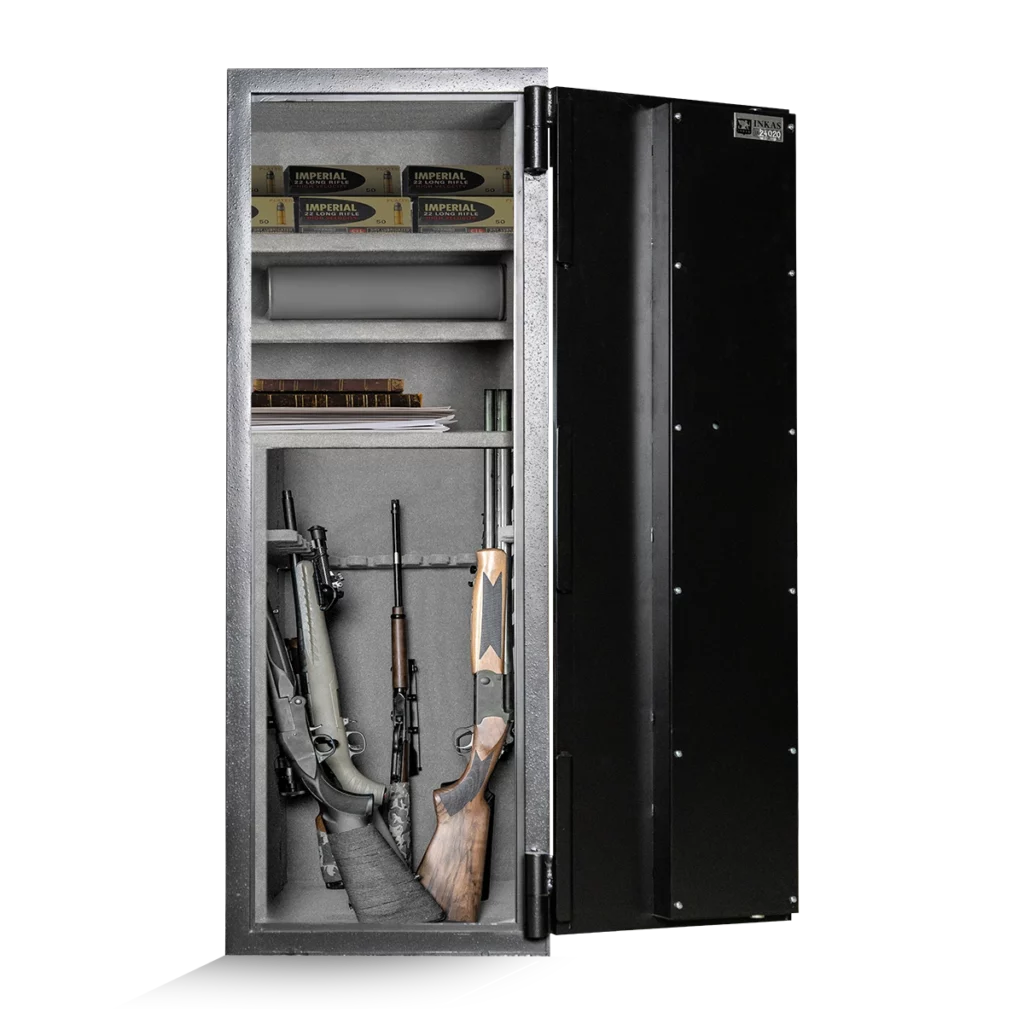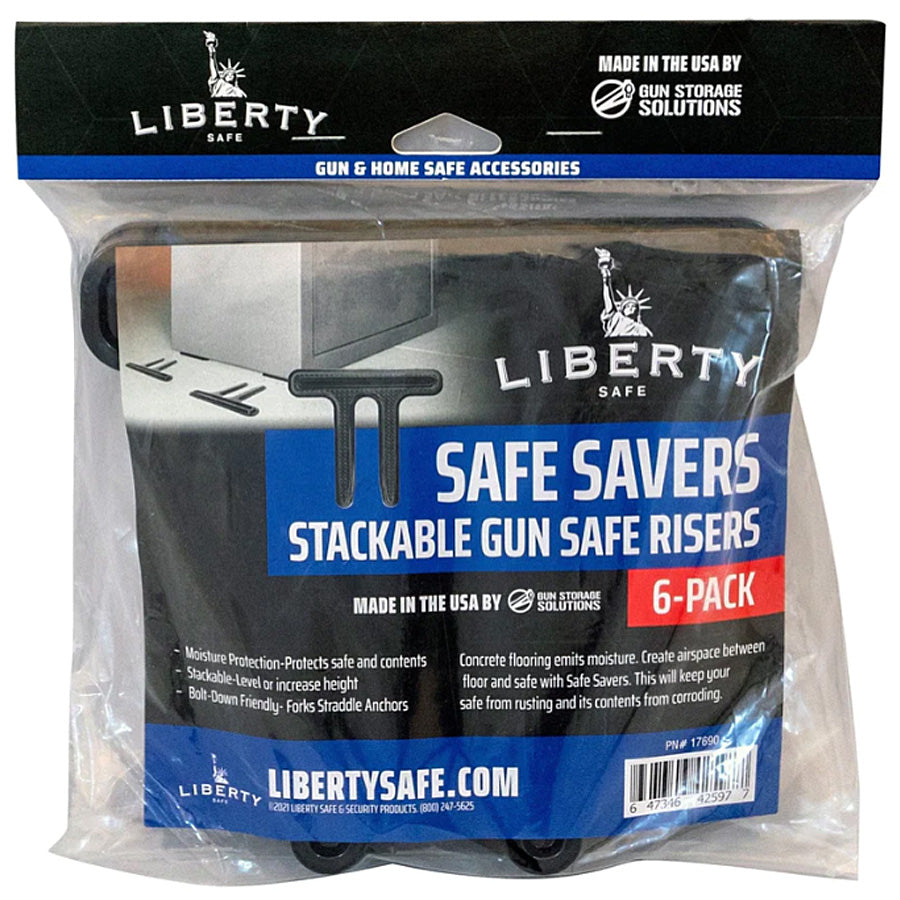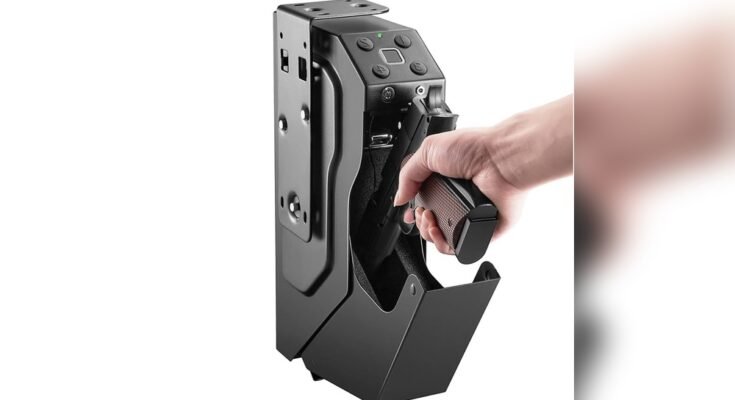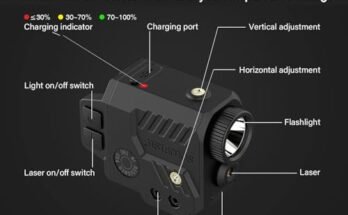When it comes to protecting your firearms, a pistol safe is your first line of defense. But how long can you really count on it to keep your valuables secure?
Understanding the lifespan of a pistol safe helps you make smart choices about your investment and your safety. If you want to know how durable these safes are, what factors affect their longevity, and when it might be time to replace yours, keep reading.
This article will give you clear answers so you can protect what matters most with confidence.

Lifespan Factors
The lifespan of a pistol safe depends on several key factors. These factors affect how long the safe can protect your firearms. Understanding them helps you choose the best safe for lasting security.
Material Quality
The material used in a pistol safe plays a big role in its durability. High-quality steel resists damage and wear for years. Thin metal or low-grade materials wear out faster. Rust-resistant coatings also help extend the safe’s life.
Build Construction
The way a safe is built affects its strength. Solid welding and tight joints make a safe tougher. Poor construction can lead to weak spots. Locks and hinges must be strong to avoid break-ins. Quality construction keeps your safe reliable over time.
Environmental Impact
Where you place the safe matters. Humid or wet areas cause rust and damage. Extreme heat or cold can weaken materials. Indoor, dry, and stable environments preserve the safe better. Protecting the safe from harsh conditions helps it last longer.
Durability Features
Pistol safes must be strong and last a long time. Durability features help protect your firearm and keep the safe working well. These features focus on locking systems, fire protection, and resistance to rust. Each part plays a key role in the safe’s lifespan.
Locking Mechanisms
Locking mechanisms keep the safe secure from theft. Good safes use solid steel bolts and reliable locks. Electronic locks often have backup keys for emergencies. Mechanical dials last long and need less maintenance. Strong locks stop easy break-ins. This durability helps the safe stay useful for many years.
Fire Resistance
Fire resistance protects pistols from high heat and flames. Safes with fireproof materials can keep contents safe for 30 minutes or more. Fire-resistant safes use special insulation inside walls and doors. This slows down heat damage during fires. Fire protection increases the safe’s value and lifespan. It gives peace of mind in dangerous situations.
Corrosion Protection
Corrosion protection prevents rust and metal decay. Safes often have powder-coated or painted surfaces. This coating stops moisture from causing rust. Some safes also use stainless steel parts. Rust can weaken the safe’s structure and locks. Corrosion resistance keeps the safe strong and working well over time.
Maintenance Practices
Proper maintenance keeps a pistol safe working well for many years. It prevents rust, damage, and locking problems. Simple care steps extend the safe’s lifespan and protect your firearms inside.
Regular Cleaning
Dust and dirt can build up inside and outside the safe. Use a soft cloth to wipe the surfaces. Clean the keypad or dial gently to avoid damage. Avoid harsh chemicals that harm the finish. Cleaning keeps the safe looking new and working smoothly.
Lubrication Tips
Lubricate the locking bolts and hinges every six months. Use a light machine oil or silicone spray. Avoid over-oiling, as it attracts dust. Proper lubrication stops parts from sticking and reduces wear. Smooth operation helps the safe stay secure and easy to open.
Inspection Routine
Check the safe’s condition regularly for signs of rust or damage. Test the lock and handle for smoothness. Make sure the door seals well to keep moisture out. Early detection of problems prevents costly repairs. Keeping a routine inspection protects your investment and your firearms.

Common Wear Issues
Pistol safes protect your firearms and keep them secure. Over time, parts of the safe can wear out. This affects how well the safe works and how long it lasts. Understanding common wear issues helps you care for your safe better. It also helps you know when to repair or replace parts.
Hinges And Locks
Hinges support the door and let it open and close smoothly. They can wear out from constant use. Rust or dirt can make hinges stiff or noisy. Locks face heavy use and sometimes fail. Keys or combinations may stop working well. Regular cleaning helps prevent these problems. Lubricate hinges and locks to keep them moving freely.
Seals And Gaskets
Seals and gaskets keep moisture and dust out of the safe. Over time, these materials can dry out or crack. Damaged seals let air and moisture inside. This can cause rust on your firearms and inside the safe. Check seals regularly and replace them if damaged. Good seals help protect your guns and safe contents.
Surface Damage
Scratches, dents, and rust can appear on the safe’s surface. These damages happen from bumps or exposure to moisture. Surface damage can weaken the safe’s structure. It also makes the safe look old and worn. Clean the safe regularly and touch up paint if needed. Protecting the surface extends the safe’s lifespan and appearance.
Extending Safe Lifespan
Extending the lifespan of a pistol safe helps protect your firearms for years. Taking care of your safe is key to keeping it secure and functional. Small actions can prevent damage and wear. Follow simple steps to make your safe last longer.
Proper Placement
Place your safe on a flat, stable surface. Avoid areas with heavy foot traffic or vibrations. Keep it away from direct sunlight to stop heat damage. Choose a spot that is easy to reach but not exposed to hazards. Correct placement reduces wear and tear.
Avoiding Moisture
Moisture causes rust and weakens your safe over time. Use a dehumidifier or silica gel packs inside the safe. Keep the safe in a dry room with good air circulation. Check for leaks or water damage regularly. Dry conditions protect metal parts and locks.
Timely Repairs
Fix small problems before they grow bigger. Check the lock and hinges for smooth operation. Lubricate moving parts with proper oils to prevent rust. Replace worn-out seals and damaged components quickly. Regular maintenance keeps your safe working well and secure.
When To Replace
Knowing when to replace your pistol safe is important for your security. A safe does not last forever. Over time, it can wear out or become less secure. Watch for signs that show your safe needs an upgrade. Consider new technology that offers better protection. Always choose safety and peace of mind.
Signs Of Failure
Rust or corrosion can weaken your safe’s body. The lock may start to stick or fail. Hinges and bolts can become loose or broken. If the safe does not close properly, it might not protect well. Strange noises during locking or unlocking are warning signs.
Upgrading Security
Your security needs may change over time. Older safes might lack features like fireproofing or waterproofing. Newer models can offer better protection against theft. If you keep valuable items, consider a stronger safe. Upgrading can improve your overall safety.
Technological Advances
Safe technology improves every year. Digital locks and biometric systems add convenience and security. Some safes now connect to smartphones for alerts. Older safes may not support these new features. Replacing your safe can give you access to these advances.

Frequently Asked Questions
How Long Does A Typical Pistol Safe Last?
A typical pistol safe lasts 10 to 20 years with proper care. Quality materials and maintenance extend its lifespan. Frequent use and environmental factors may reduce durability.
What Factors Affect A Pistol Safe’s Lifespan?
Material quality, usage frequency, and maintenance affect a pistol safe’s lifespan. Exposure to moisture and extreme temperatures can cause wear. Proper cleaning and lubrication help preserve its condition.
Can A Pistol Safe Become Obsolete Over Time?
Yes, a pistol safe can become obsolete due to outdated locking mechanisms. Technological advancements may render older safes less secure. Upgrading to modern safes improves security and usability.
How Does Maintenance Impact Pistol Safe Longevity?
Regular maintenance prevents rust, dust buildup, and mechanical issues. Lubricating locks and hinges ensures smooth operation. Proper upkeep significantly extends the pistol safe’s lifespan.
Conclusion
A pistol safe can last many years with good care. Choose one made from strong materials. Keep it in a dry, safe place. Regular cleaning helps prevent rust and damage. The lock and hinges need occasional checks. Investing time in maintenance extends its life.
A well-kept safe protects your firearms securely. Remember, the lifespan depends on use and care. This makes your safe a reliable choice for years. Trust your safe to guard what matters most.



